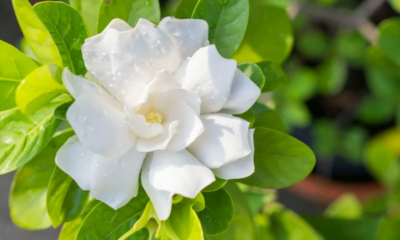Symbolism
The Symbolism of the Hummingbird in the Bible: A Closer Look

[ad_1]
This article takes a closer look at the symbolism of the hummingbird in the Bible. We will explore the significance of the hummingbird in biblical texts and its cultural and spiritual symbolism. By examining the references to the hummingbird in the Bible, we can gain a deeper understanding of its symbolic meaning in a religious context.
What is the significance of the hummingbird in the Bible?
In the Bible, the hummingbird is often associated with attributes such as agility, joy, and resilience. One of the most famous references to the hummingbird is found in Psalm 104:12 which describes the birds of the air making their nests by the waters and the mountains being satisfied with the fruit of God’s works. This image of the hummingbird finding sustenance in God’s creation symbolizes the idea of divine providence and care for all living creatures.
Furthermore, the hummingbird’s ability to move in any direction, including backwards, is seen as a symbol of adaptability and perseverance in difficult circumstances. This ties in with the biblical message of enduring faith and the ability to overcome obstacles with God’s help.
How is the hummingbird culturally and spiritually symbolic?
Beyond its biblical references, the hummingbird is also significant in various cultures and spiritual traditions. In Native American folklore, the hummingbird is often portrayed as a symbol of love, good fortune, and joy. Its delicate appearance and swift movements have led to its association with beauty and harmony in nature.
Spiritually, the hummingbird symbolizes the ability to seek out the sweetness of life and to be present in the moment. Its rapid wing beats and hovering motion are seen as a reminder to live life to the fullest and to embrace the joy and beauty in the world around us. These cultural and spiritual associations add depth to the symbolism of the hummingbird in the Bible, highlighting its universal significance.
What lessons can we learn from the symbolism of the hummingbird in the Bible?
The symbolism of the hummingbird in the Bible offers valuable lessons for believers. Its portrayal as a creature that finds nourishment and sustenance in God’s creation reminds us of the importance of trusting in God’s provision and care. The hummingbird’s agility and resilience serve as a reminder of the need to remain steadfast in faith, even in the face of adversity.
Additionally, the hummingbird’s association with joy and beauty encourages a focus on gratitude and appreciation for the wonders of creation. It serves as a call to embrace the present moment and to seek out the sweetness of life, even in challenging times. These lessons can inspire and uplift those seeking spiritual insight from the symbolism of the hummingbird in the Bible.
How can we incorporate the symbolism of the hummingbird into our faith?
For those seeking to incorporate the symbolism of the hummingbird into their faith, there are various ways to do so. One approach is to use the image of the hummingbird as a visual reminder of the divine care and provision found in biblical texts. This can be done through artwork, jewelry, or decorative items that feature the image of a hummingbird.
Another way to integrate the symbolism of the hummingbird into faith practice is through meditation and reflection. Taking time to contemplate the agility, beauty, and resilience of the hummingbird can serve as a source of spiritual inspiration and renewal. By incorporating the symbolism of the hummingbird into our faith, we can deepen our connection to biblical truths and find spiritual encouragement in our daily lives.
Conclusion
In conclusion, the symbolism of the hummingbird in the Bible offers rich spiritual insights and lessons for believers. Its portrayal as a creature of agility, joy, and resilience serves as a powerful reminder of God’s care and provision. The cultural and spiritual significance of the hummingbird further adds depth to its symbolism, highlighting its universal appeal. By embracing the lessons and symbolism of the hummingbird, individuals can find inspiration and spiritual renewal in their faith journey.
FAQs
1. Is the hummingbird explicitly mentioned in the Bible?
No, the hummingbird is not explicitly mentioned in the Bible. The references to the hummingbird in the Bible are more symbolic in nature, drawing on the bird’s attributes and behaviors to convey spiritual lessons and messages.
2. How can I incorporate the symbolism of the hummingbird into my daily life?
One way to incorporate the symbolism of the hummingbird into your daily life is to reflect on its attributes and apply them to your own faith journey. Take time to meditate on the agility, joy, and resilience represented by the hummingbird and consider how these qualities can inspire and uplift you in your spiritual walk.
3. Why is the symbolism of the hummingbird significant in the Bible?
The symbolism of the hummingbird in the Bible is significant because it offers spiritual lessons and insights for believers. The portrayal of the hummingbird as a creature of agility, joy, and resilience serves as a powerful reminder of God’s care and provision, as well as the importance of embracing the sweetness of life.
4. How does the symbolism of the hummingbird tie in with biblical teachings?
The symbolism of the hummingbird ties in with biblical teachings by highlighting themes of faith, provision, and gratitude. The hummingbird’s attributes and behaviors reflect these themes, offering valuable lessons and inspiration for believers seeking to deepen their spiritual understanding.
5. Are there other animals or creatures with symbolic significance in the Bible?
Yes, there are several animals and creatures with symbolic significance in the Bible, including the dove, lamb, and lion, among others. Each of these creatures carries unique symbolism and conveys specific spiritual messages and lessons.
[ad_2]
Symbolism
The Symbolism of Life and Death in Tattoos: Exploring the Deep Meaning Behind Ink

[ad_1]
In this article, we will delve into the symbolism of life and death in tattoos, exploring the deep meanings behind the ink that adorns the skin of people all over the world. We will discuss how these symbols can hold significance for individuals and how they can be a form of personal expression.
What is the Symbolism of Life in Tattoos?
Life is often symbolized in tattoos through the use of various elements such as animals, plants, and other natural symbols. For example, the tree of life is a commonly used symbol in tattoos to represent the interconnectedness of all living things. It symbolizes growth, strength, and the cycle of life. Another common symbol of life in tattoos is the phoenix, a mythical bird that is often depicted rising from the ashes. This represents rebirth and the resilience of the human spirit.
Furthermore, tattoos of animals such as lions, elephants, and butterflies are often seen as representations of life and vitality. These creatures are often associated with strength, beauty, and the power of transformation. In addition to animals, tattoos of flowers and plants are also used to symbolize life. The lotus flower, for example, is often used in tattoos to represent the beauty that can arise from difficult or challenging circumstances.
How is Death Symbolized in Tattoos?
Death is a complex and thought-provoking subject, and it is often symbolized in tattoos in various ways. One of the most common symbols of death in tattoos is the skull. The skull is a universal symbol of mortality and the impermanence of life. It is often used in tattoos to remind the wearer of the fragility of life and the inevitability of death. In addition to skulls, tattoos of dark and macabre imagery such as ghosts, skeletons, and reapers are also used to symbolize death.
Besides these traditional symbols, tattoos of symbolic objects associated with death, such as hourglasses, coffins, and gravestones, are often used to represent the passage of time and the end of life. These symbols can serve as a reminder to live life to the fullest and to cherish each moment. The use of dark and morbid imagery in tattoos can also serve as a form of memento mori, a Latin phrase meaning “remember that you will die,” which encourages the contemplation of mortality and the importance of living a meaningful life.
Can Tattoos Hold Personal Meanings Related to Life and Death?
Yes, tattoos can hold deeply personal meanings related to life and death for individuals. Many people choose to get tattoos that honor the memory of a loved one who has passed away. These memorial tattoos often feature imagery or symbols that hold significance to the individual, such as a portrait, a meaningful quote, or a symbol that represents a shared memory with the deceased. These tattoos can serve as a way to keep the memory of the departed alive and to carry their presence with the wearer.
In addition to memorial tattoos, some individuals may choose to get tattoos that symbolize their own journey through life and their experiences with death or loss. These tattoos can be deeply personal and may feature imagery that represents overcoming adversity, finding strength in the face of hardship, or coming to terms with mortality. They can serve as a form of catharsis and self-expression for the wearer.
Are There Cultural or Religious Symbolism Related to Life and Death in Tattoos?
Yes, various cultures and religions have their own symbolism related to life and death in tattoos. For example, in many Eastern cultures, the lotus flower is a symbol of purity and spiritual awakening. It is often used in tattoos to represent the cycle of life, death, and rebirth. In addition, in some Native American traditions, the dreamcatcher is a symbol of protection and to ward off negative energy. It is often incorporated into tattoos as a symbol of spiritual guidance and the continuation of life’s journey beyond death. Similarly, in Christianity, the symbol of the cross is often used in tattoos to represent the cycle of life, death, and resurrection.
It’s important to note that cultural and religious symbolism in tattoos should be approached with respect and understanding. It’s crucial to be aware of the meaning behind these symbols and to ensure that they are used in a way that is culturally appropriate and sensitive to their significance.
Conclusion
Tattoos have long been a form of personal expression and symbolism, and the themes of life and death hold deep meaning for many individuals. The symbols of life and death in tattoos can serve as a reminder of the preciousness of life, the inevitability of death, and the resilience of the human spirit. Whether it’s through traditional imagery, personal symbols, or cultural and religious icons, tattoos can provide a powerful means of storytelling and self-expression related to the journey of life and the contemplation of mortality.
FAQs
Can tattoos hold personal meanings related to life and death?
Yes, tattoos can hold deeply personal meanings related to life and death for individuals. Many people choose to get tattoos that honor the memory of a loved one who has passed away. These memorial tattoos often feature imagery or symbols that hold significance to the individual, such as a portrait, a meaningful quote, or a symbol that represents a shared memory with the deceased. These tattoos can serve as a way to keep the memory of the departed alive and to carry their presence with the wearer.
Are there cultural or religious symbolism related to life and death in tattoos?
Yes, various cultures and religions have their own symbolism related to life and death in tattoos. It’s important to be aware of the meaning behind these symbols and to ensure that they are used in a way that is culturally appropriate and sensitive to their significance.
How is death symbolized in tattoos?
Death is often symbolized in tattoos through the use of various imagery such as skulls, ghosts, skeletons, and hourglasses. These symbols can serve as a reminder to live life to the fullest and to cherish each moment. The use of dark and morbid imagery in tattoos can also serve as a form of memento mori, which encourages the contemplation of mortality and the importance of living a meaningful life.
What is the symbolism of life in tattoos?
Life is often symbolized in tattoos through the use of various elements such as animals, plants, and other natural symbols. For example, the tree of life is a commonly used symbol in tattoos to represent the interconnectedness of all living things. It symbolizes growth, strength, and the cycle of life. The use of flowers and plants in tattoos can also symbolize the beauty that can arise from difficult or challenging circumstances.
Can tattoos hold religious or spiritual meanings related to life and death?
Yes, tattoos can hold religious or spiritual meanings related to life and death. Various cultures and religions have their own symbolism related to life and death in tattoos, and these symbols can be incorporated into tattoos as a means of spiritual guidance and reflection on the journey of life and mortality.
[ad_2]
Symbolism
Uncovering the Meaning of the Thistle: A Look at its Symbolism and Significance

[ad_1]
Welcome to our article on the symbolism and significance of the thistle. In this article, we will delve into the history and meaning of this unique and prickly plant, exploring its symbolism in different cultures and its significance in various contexts. From its representation of resilience to its association with protection, we will uncover the deeper meaning of the thistle and its enduring relevance in our world today.
What is the history of the thistle and how does it symbolize resilience?
The thistle has a rich history that dates back to ancient times. It has been revered for its resilience and ability to thrive in harsh conditions, often symbolizing strength and determination in the face of adversity. The thistle’s prickly exterior serves as a metaphor for overcoming obstacles and persevering through challenges. In Scottish folklore, the thistle is linked to the country’s defense against invaders, highlighting its symbolic significance as a representation of protection and resilience.
Overall, the thistle’s history is closely tied to its symbolism of resilience, making it a powerful emblem for endurance and strength in the face of adversity.
How is the thistle associated with protection and national pride?
The thistle has long been associated with protection, particularly in the context of Scottish heraldry. The legend of how the thistle became the emblem of Scotland involves a Viking invasion, during which a thistle’s thorns alerted the Scots to the impending attack, ultimately leading to their victory and the adoption of the thistle as a national symbol. This association with protection has endured over the centuries, signifying the thistle’s significance as a symbol of safeguarding and national pride.
Furthermore, the thistle’s connection to protection extends beyond Scotland, with variations of the plant being used as symbols of defense and security in other cultures. Its prickly nature serves as a deterrent to potential threats, reinforcing its symbolic representation of safeguarding and fortification.
What does the thistle symbolize in terms of resilience and strength of character?
In addition to its symbolism of resilience, the thistle is also often associated with the strength of character. Its ability to thrive in adverse conditions and harsh environments is reflective of an inner fortitude and unwavering spirit. The thistle’s resilience in the face of adversity serves as a metaphor for the human capacity to endure and overcome challenges, emphasizing the importance of resilience and strength of character in navigating life’s obstacles.
Moreover, the thistle’s symbolism of strength of character extends to its representation of pride and determination. Its ability to flourish despite its prickly exterior highlights the resilience and tenacity required to overcome adversity, inspiring individuals to embrace their inner strength and face challenges with courage and determination.
How is the thistle viewed in different cultural contexts?
Across different cultures, the thistle holds a variety of symbolic meanings and interpretations. In addition to its associations with resilience and protection, the thistle is often revered as a symbol of endurance and survival. Its ability to flourish in harsh environments and its reputation as a resilient plant have led to its symbolism as a representation of perseverance and tenacity in various cultural contexts.
Furthermore, the thistle’s symbolism in different cultures also includes notions of nobility and honor, particularly in relation to its representation in heraldry and national emblems. Its association with esteemed qualities such as bravery, courage, and independence reinforces the thistle’s enduring significance as a symbol of strength and resilience across diverse cultural traditions.
Why is the thistle still relevant and significant today?
Despite its ancient origins, the symbolism and significance of the thistle remain relevant in contemporary society. In an increasingly challenging and unpredictable world, the thistle serves as a reminder of the importance of resilience, strength of character, and the ability to overcome adversity. Its enduring relevance as a symbol of protection and fortitude resonates with individuals facing personal and collective hardships, offering a source of inspiration and encouragement in the face of challenges.
Moreover, the thistle’s symbolism in various cultural contexts underscores its universal significance as a representation of resilience and perseverance, transcending geographical and historical boundaries. In today’s world, the thistle’s enduring symbolism serves as a powerful and timeless emblem of strength and determination, inspiring individuals to confront obstacles with courage and resilience.
Conclusion
In conclusion, the symbolism and significance of the thistle encompass a rich tapestry of meanings, ranging from resilience and protection to strength of character and endurance. Embedded in ancient folklore and heraldry, the thistle’s enduring relevance as a symbol of fortitude and perseverance reflects its universal appeal and timeless significance. As we navigate life’s challenges and uncertainties, the thistle stands as a powerful emblem of resilience and strength, inspiring individuals to embrace their inner fortitude and confront adversity with determination and courage.
FAQs
1. What is the connection between the thistle and Scottish folklore?
The thistle is intricately connected to Scottish folklore, where it is revered as a symbol of defense and protection. According to legend, the thistle played a crucial role in alerting the Scots to a Viking invasion, leading to their victory and the adoption of the thistle as a national emblem. This association with protection and national pride has endured over the centuries, cementing the thistle’s significance in Scottish folklore and heraldry.
2. How does the thistle symbolize resilience and strength of character?
The thistle’s symbolism of resilience is rooted in its ability to thrive in harsh conditions and its prickly exterior, which serves as a metaphor for overcoming challenges. In addition, the thistle’s association with the strength of character is reflected in its representation of pride, determination, and the capacity to endure and overcome adversity. Its enduring symbolism as a representation of inner fortitude and unwavering spirit resonates with individuals seeking to navigate life’s obstacles with courage and resilience.
3. What significance does the thistle hold in different cultural contexts?
Across different cultures, the thistle holds various symbolic meanings, including endurance, survival, and nobility. Its associations with esteemed qualities such as bravery, courage, and independence reinforce its enduring significance as a symbol of strength and resilience. The thistle’s universal appeal and timeless symbolism transcend geographical and historical boundaries, making it a powerful emblem of fortitude and determination in diverse cultural traditions.
4. Why is the thistle still relevant and significant today?
In today’s society, the thistle’s enduring relevance as a symbol of resilience and protection resonates with individuals navigating personal and collective challenges. Its timeless significance as a representation of fortitude and perseverance inspires individuals to confront obstacles with courage and resilience. The thistle’s symbolism offers a source of inspiration and encouragement in an increasingly challenging and unpredictable world, emphasizing the importance of strength of character and the ability to overcome adversity.
5. How does the symbolism of the thistle remain timeless and universal?
The thistle’s enduring symbolism as a representation of resilience and strength transcends historical and cultural boundaries, making it a timeless and universal emblem of fortitude and determination. Its rich tapestry of meanings, ranging from protection and resilience to endurance and nobility, underscores its enduring significance and universal appeal. The thistle’s symbolic resonance as a source of inspiration and encouragement underscores its timelessness and relevance in today’s world.
[ad_2]
Symbolism
The Symbolism of White Feathers: What do they represent?

[ad_1]
White feathers have long been regarded as symbols of purity, peace, and spirituality across various cultures and traditions. In this article, we will explore the symbolism of white feathers and what they represent in different contexts. From spiritual significance to personal meanings, we will uncover the deeper symbolism behind these ethereal feathers and how they can serve as powerful symbols in our lives.
What is the symbolism of white feathers?
In many cultures, white feathers are seen as symbols of purity, innocence, and spirituality. White is often associated with light, goodness, and positivity, making white feathers a powerful symbol of hope and protection. In spiritual and religious contexts, white feathers are often seen as messages from the divine or angels, serving as a reminder of their presence and guidance.
Moreover, the pristine color of white feathers symbolizes a clean slate or fresh start, representing new beginnings and a sense of renewal. In times of struggle or uncertainty, finding a white feather can offer comfort and reassurance, symbolizing a sense of peace and harmony during difficult times.
What do white feathers represent in different cultures?
In Native American culture, the sight of a white feather is often seen as a sign of peace and healing, representing a connection to the spirit world and the guidance of ancestors. Similarly, in many Asian cultures, white feathers are associated with purity and protection, serving as a symbol of peace and tranquility.
In Christianity, white feathers are often linked to angels and the presence of divine beings. Many believe that finding a white feather is a sign of spiritual protection and guidance from guardian angels. The symbolism of white feathers transcends cultural boundaries, resonating with people from all walks of life and belief systems.
What is the personal significance of finding a white feather?
On a personal level, finding a white feather can hold significant meaning for individuals. Many people believe that encountering a white feather is a message from a loved one who has passed away, a symbol of their continued presence and love. It can also serve as a reminder to stay positive and hopeful during challenging times, offering a sense of comfort and reassurance.
For some, finding a white feather may symbolize a sense of protection and guidance, encouraging them to trust their instincts and embrace a newfound sense of peace and clarity. It can also be a symbol of encouragement and support, reminding individuals to remain strong and resilient in the face of adversity.
How can one incorporate white feathers into their life?
There are numerous ways to incorporate the symbolism of white feathers into our lives. Many people choose to keep a white feather in a special place, such as a locket or a keepsake box, as a reminder of hope, purity, and spiritual guidance. Some may also choose to incorporate white feathers into their home décor or jewelry, using them as a symbol of positivity and protection.
Additionally, incorporating white feathers into meditation or mindfulness practices can help to cultivate a sense of peace and tranquility. Whether it’s through artwork, jewelry, or daily mindfulness rituals, integrating the symbolism of white feathers into our lives can serve as a powerful reminder of the beauty and light that surrounds us.
Conclusion
White feathers hold deep symbolism across various cultures and belief systems, representing purity, peace, and spiritual guidance. Whether found in nature or gifted from a loved one, these ethereal feathers serve as powerful symbols of hope and protection. By understanding the significance of white feathers, we can embrace their symbolism in our lives and find comfort in their presence during challenging times.
FAQs
Can I find white feathers in urban areas?
Yes, white feathers can be found in a variety of environments, including urban areas. While they are often associated with birds and nature, it is not uncommon to come across white feathers in urban settings.
Is there a specific way to interpret the meaning of a white feather?
Interpreting the meaning of a white feather can be a personal and subjective experience. It can hold different significance for individuals based on their beliefs, experiences, and personal connection to the symbolism of white feathers.
Can I create my own symbolism with white feathers?
Absolutely! Incorporating white feathers into your life and creating personal symbolism is a wonderful way to infuse their meaning into your daily routine. Whether it’s through art, jewelry, or meditation, finding your own connection to the symbolism of white feathers can be a deeply personal and enriching experience.
Are white feathers always seen as positive symbols?
While white feathers are often associated with positivity, purity, and peace, their symbolism can vary based on individual interpretations and cultural contexts. Some may view white feathers in a more neutral or introspective light, allowing for a broader range of meanings and significance.
Can I use white feathers for spiritual protection?
Many people believe that white feathers can serve as symbols of spiritual protection and guidance. By incorporating white feathers into your spiritual practices and rituals, they can serve as talismans of positivity, hope, and encouragement during times of uncertainty or difficulty.
[ad_2]
-

 Spirituality5 months ago
Spirituality5 months agoThe Power of Sacred Mountains and Their Spiritual Significance
-

 Symbolism5 months ago
Symbolism5 months agoStrong Symbolism of Ginkgo Leaves: Strength, Longevity, and Resilience
-

 Symbolism5 months ago
Symbolism5 months agoSymbolic Meaning of Barley: Revealing the Symbolic Significance
-

 Symbolism5 months ago
Symbolism5 months agoGardenia Flower Meaning: Revealing the Symbolism
-

 Symbolism5 months ago
Symbolism5 months agoRevealing the Symbolism of the White Rabbit in Sexual Contexts #101
-

 Dream Meanings5 months ago
Dream Meanings5 months agoTsunami in Dreams Meaning: Truth Behind, Does it mean a bad thing?
-

 Spirituality5 months ago
Spirituality5 months agoRevealing the Spiritual Meaning of Mud: Finding Beauty in the Mess
-

 Dream Meanings5 months ago
Dream Meanings5 months agoMeaning of Crocodiles in Dreams : Exposing the Truth





















